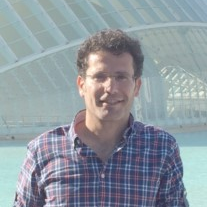Advanced Characterization of Functional Materials
A special issue of Applied Sciences (ISSN 2076-3417). This special issue belongs to the section "Materials Science and Engineering".
Deadline for manuscript submissions: closed (30 April 2023) | Viewed by 12912
Special Issue Editors
Interests: laser–polymer interaction mechanisms; laser micro- and nano-structuring of polymers; direct laser interference patterning in polymers; laser-induced period surface structures in polymers; applications of modified polymers; functional polymers
Special Issues, Collections and Topics in MDPI journals
Interests: semiconductor metal oxides for applications on sensing photocatalysis and optoelectronics
Special Issues, Collections and Topics in MDPI journals
Special Issue Information
Dear Colleagues,
The fundamental understanding of the origin of functional properties of materials at the microscopic level and the development of comprehensive models to predict these properties are fields of intense research. The essential properties of these materials may be remarkably altered by the size, topology, shape of their constituent phases and surface topography, resulting in entirely different optical, mechanical, electrical, and magnetic properties.
This Special Issue covers advanced characterization techniques, including all methods of microscopy (light, 2 photons, electron, etc.), analysis (microanalysis and surface analytical techniques), and spectroscopic characterization (Raman, LIBS, laser, etc.), with topics connecting the preparation and the resulting relevant functional properties.
It is our pleasure to invite you to submit a manuscript to this Special Issue. Full papers, short communications, and reviews would be greatly appreciated.
Dr. Daniel Sola
Prof. Dr. Paloma Fernández Sánchez
Guest Editors
Manuscript Submission Information
Manuscripts should be submitted online at www.mdpi.com by registering and logging in to this website. Once you are registered, click here to go to the submission form. Manuscripts can be submitted until the deadline. All submissions that pass pre-check are peer-reviewed. Accepted papers will be published continuously in the journal (as soon as accepted) and will be listed together on the special issue website. Research articles, review articles as well as short communications are invited. For planned papers, a title and short abstract (about 100 words) can be sent to the Editorial Office for announcement on this website.
Submitted manuscripts should not have been published previously, nor be under consideration for publication elsewhere (except conference proceedings papers). All manuscripts are thoroughly refereed through a single-blind peer-review process. A guide for authors and other relevant information for submission of manuscripts is available on the Instructions for Authors page. Applied Sciences is an international peer-reviewed open access semimonthly journal published by MDPI.
Please visit the Instructions for Authors page before submitting a manuscript. The Article Processing Charge (APC) for publication in this open access journal is 2400 CHF (Swiss Francs). Submitted papers should be well formatted and use good English. Authors may use MDPI's English editing service prior to publication or during author revisions.






